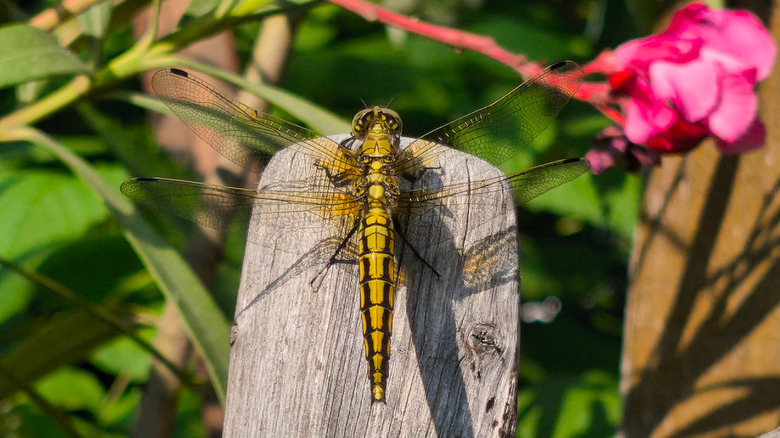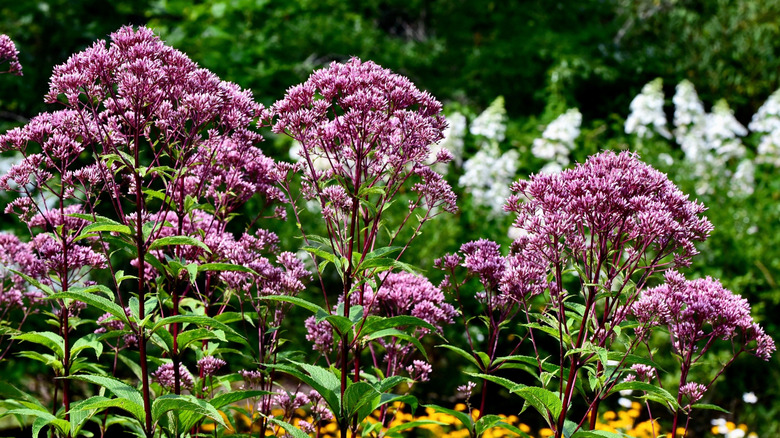The Pink-Blooming Plant That Will Have Dragonflies Flocking To Your Yard
Avid gardeners know that the key to a lush landscape is pollinators. Butterflies, bees and tons of other insects including flies, beetles, and wasps, act as pollinators. And the more of these bugs you have zipping around blooms, the more likely you are to attract dragonflies: Predatory insects that feast on these bugs.
There's one pink-blooming plant that not only attracts pollinators, but also thrives in the same marshy habitat where dragonflies live. Enter the Joe-Pye weed (Eutrochium spp.). Native to North America, this hardy summer flower can reach heights of 5 feet and tolerates drought and full sun. But don't let the name fool you! This "weed" actually produces gorgeous pink and purplish blooms that come back year after year.
When you plant Joe-Pye weed in your garden, you'll soon find it attracting all sorts of insects who love landing on the fan-like flowers and feasting on their leaves. In addition, more than 35 species of moths and butterflies use the plant as a host. Those are just some of the top reasons to consider planting sweet Joe-Pye weed in your garden. Soon, this billowy, beautiful plant will draw dragonflies to your yard, too!
All you need to know about Joe-Pye weed
Joe-Pye weed is a member of the Aster family, with blooms that smell like vanilla and last from the middle of summer up until fall. The plant does best in USDA Hardiness Zones 4 to 9, and while it's known for dotting the edges of ponds and wetlands, it does best in well-draining soil. That said, Joe-Pye weed needs consistent watering to maintain soil moisture, something that mulch will help with. Many gardeners find the plant does well in ditches or low-lying areas that retain water after it rains.
This pretty plant needs full to partial sun and also makes a great addition to pollinator and native plant gardens. You might find that it's perfect as the star planting around your birdbath, which dragonflies will also be drawn to. It won't mind the extra splashes it gets from the birds happily frolicking in the water.
As a taller plant, it will look best in the back of your beds where it won't overshadow shorter plants and can shine without the need for staking. Be sure to use this fall pruning trick that keeps little Joe-Pye weed coming back every year. While it's easy to grow, keep in mind there are some pesky problems you might encounter when growing Joe-Pye weed.

